Did you know? As many as 20% of dogs suffer from ear infections in India. Ear infection in dogs is a broad term that can refer to the infection of the outer, middle or inner part of their ears.
In many cases, only one ear is involved in the infection. However, there have been cases where both ears were infected at the same time.
What are the Signs of Ear Infection in Dogs?
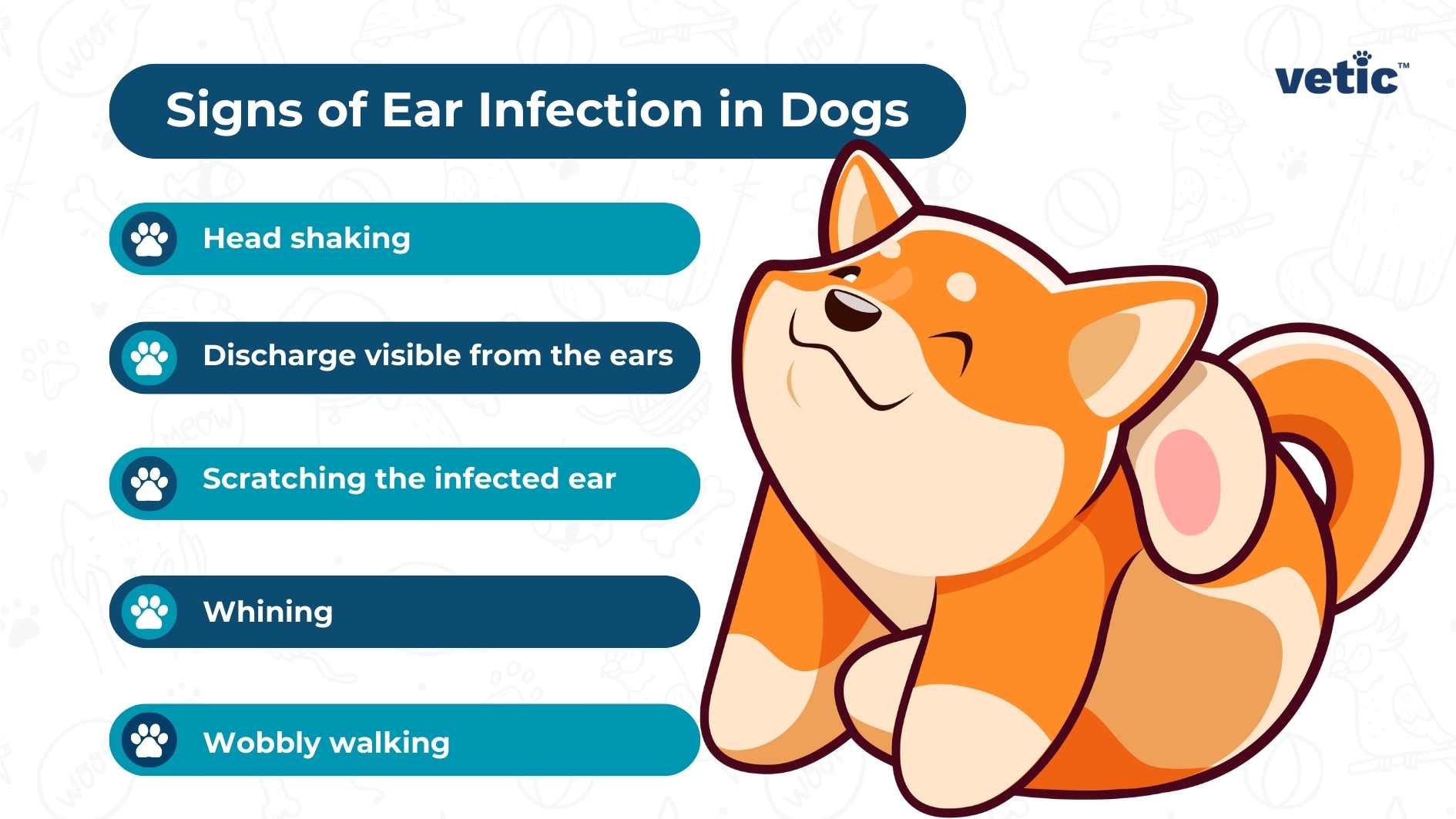
The most common signs of ear infection in dogs are –
- Head shaking
- Wobbly walking
- Scratching the infected ear
- Whining
- Discharge visible from the ears
However, the signs may vary depending on the exact location of the infection.
Causes of Ear Infection in Dogs?
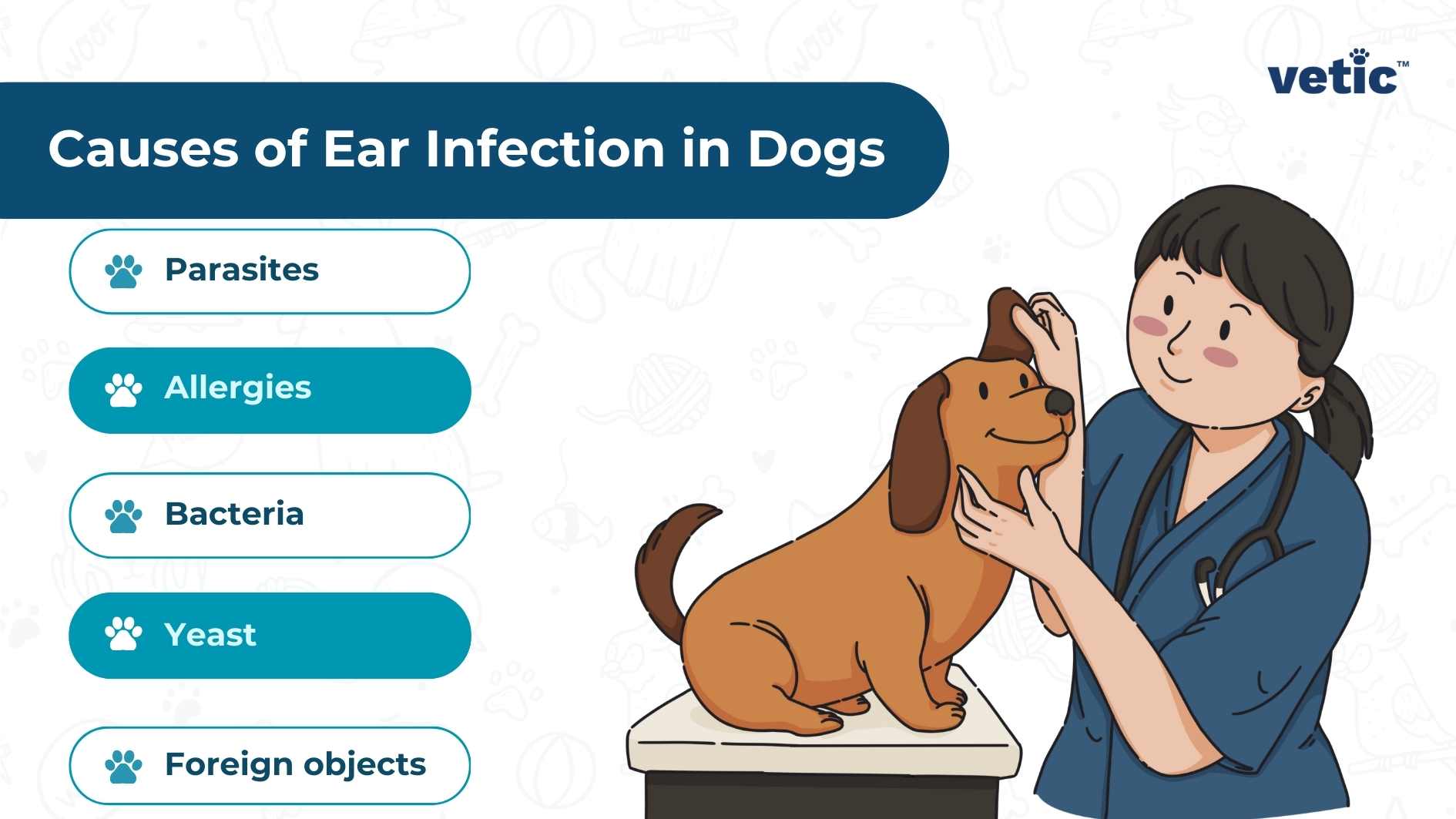
Ear infections in dogs are common and may also be recurring. The common causes of ear infections in dogs include –
- Parasites (ear mites)
- Allergies
- Bacteria
- Yeast
- Foreign objects lodged in the ear
In multiple cases of ear infections in dogs, the causes aren’t diagnosed accurately and treated properly. Hence the infection keeps recurring in the same ear.
A dog’s ears are home to several microbes. They live without causing any harm until the environment in the ears changes drastically and causes one or more of the microbes to multiply.
Recurring ear infection in dogs can be a sign of low immunity. Speak with your doctor if your dog has had multiple incidences of ear infections in the past year.
Ear Infection in Dogs: Diagnosis
Diagnosing the cause of ear infection in dogs can take some time, especially if your dog is in pain, uncooperative and aggressive.
The veterinarian typically examines all signs including body temperature, hydration levels, heart rate and breathing, and pain level.
They will need to use an otoscope to check the inflammation, source of the discharge and potential growth inside the ear(s).
Inserting the otoscope can be painful especially if your dog’s ears have been inflamed for a while. So, the doctor can either use a mild sedative or painkiller to make the process painless for your pup.
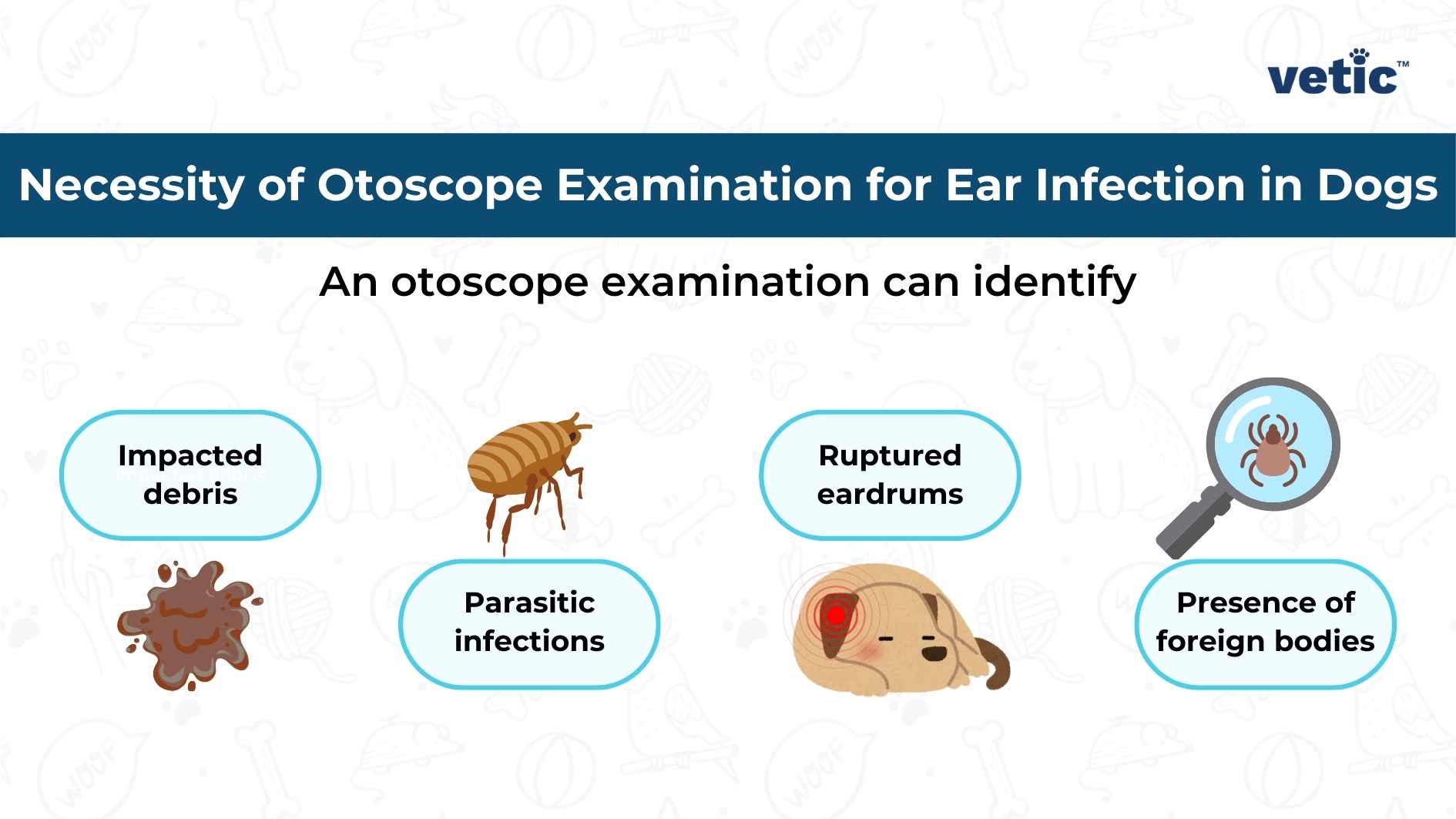
An otoscope examination can help in the identification of –
- Impacted debris
- Parasitic infections
- Ruptured eardrums
- Presence of foreign bodies
Sometimes, a simple physical examination isn’t enough to confirm the cause of the ear infection.
In such cases, your veterinarian will retrieve tissues from the infected ear for culture. A culture can reveal the type of microorganism causing the ear infection.
How are Ear Infections in Dogs Categorised?
Ear infections in dogs are most commonly categorised according to which part of the ear is involved in the infection and/or inflammation.
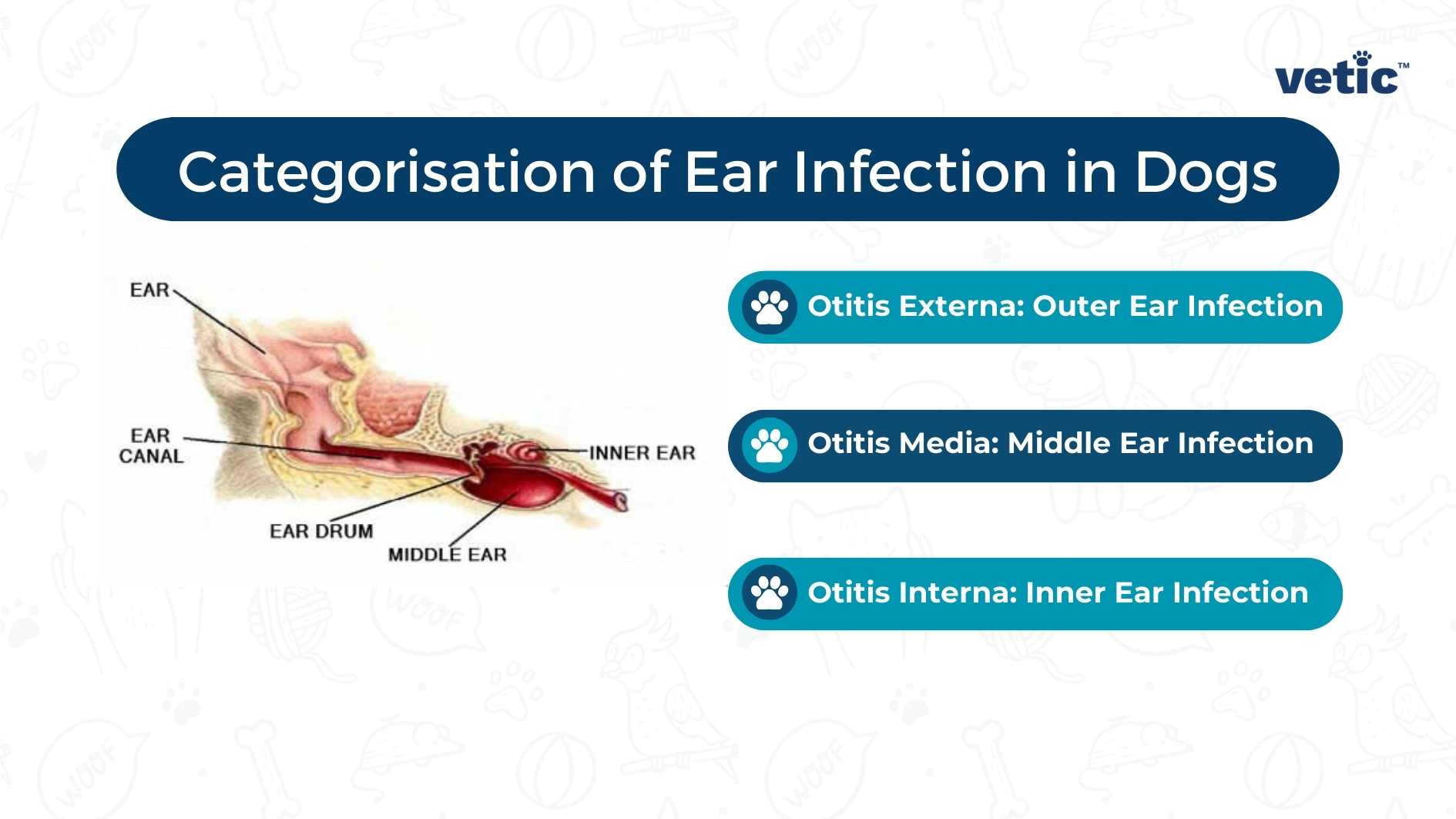
Otitis Externa
When only the outer part(s) of the dog’s ear is involved in the infection or inflammation then the veterinarian may refer to it as otitis externa.
Otitis Media
Otitis media can be an acute or chronic infection of the middle ear of the dog. It is quite common among older dogs.
Otitis Interna
It is a rarer and more serious infection and inflammation of the innermost part of the ear which typically involves other organs as well.
We will discuss otitis externa, media and interna in the following blogs in more detail.
Treatment of Ear Infection in Dogs
The treatment of ear infection in dogs depends on the cause of the infection. You should not use OTC medicines or paediatric ear drops for the treatment of ear infections in your dog.
The veterinarian may recommend a combination of topical and oral medications.
Several topical medicines or ear drops can become inactivated by the discharge from your dog’s ears.
Depending on the swelling and pain, the vet may also prescribe pain medication for a few days along with corticosteroids.
What Should You Do If Your Dog Has an Ear Infection?
Avoid home remedies and OTC meds for your dog’s ear infections.
Take your dog to the vet at the first sign of infection so they can begin treating the root cause.
Be careful to taper off the pain meds and corticosteroids as per the vet’s prescription. And continue the antibiotic medicines for your dog as long as the veterinarian recommends even after they stop showing signs of ear infection.
Visit the veterinarian with your dog weekly or bi-weekly for examinations if they have tested positive for a bacterial or fungal ear infection. Some cases of ear infections take months of treatment for complete cure.
Can You Prevent Ear Infection in Your Dog?
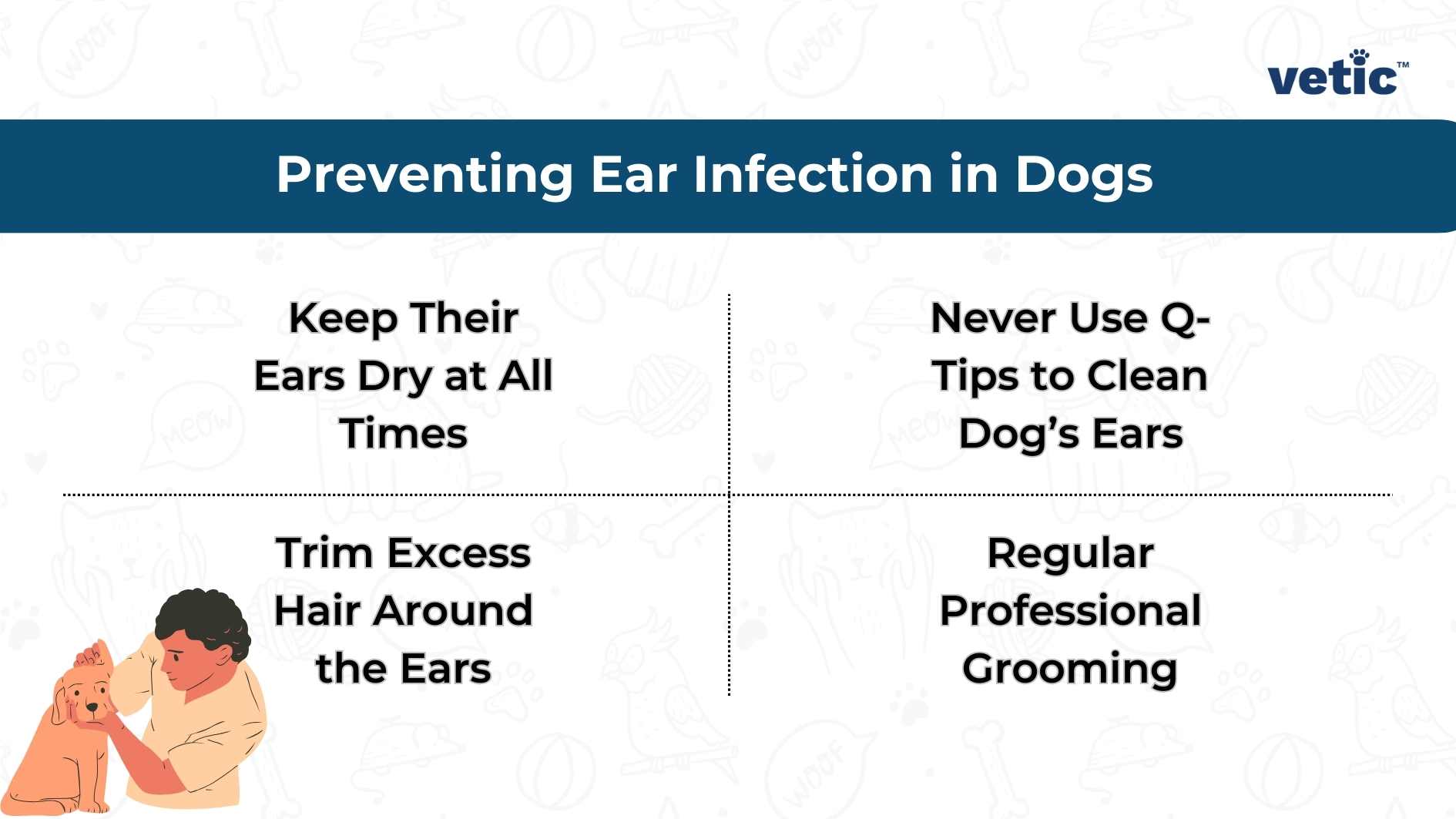
Ear infection in dogs can be prevented to a great extent by taking them for regular professional grooming where the expert cleans their ears with a specially formulated solution.
If you want to clean your dog’s ears at home, speak to a veterinarian. They should be able to guide you as to how to clean them and recommend a suitable cleaning solution.
You can keep the fur around your dog’s ears trimmed to prevent irritation.
Moisture can increase the chances of your dog’s ears becoming infected. So, always use cotton balls to prevent water from going in when bathing them and dry their ears thoroughly after a bath or swim.
Avoid using Q-tips as they will push the dirt and ear wax further into their inner ear making the situation worse. Always clean the outer portion of your dog’s ears almost regularly using cotton swabs or sterile gauze.
